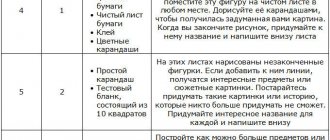Perseveration is a stable reproduction of any statement, activity, emotional reaction, sensation. Hence, motor, sensory, intellectual and emotional perseverations are distinguished. The concept of perseveration, in other words, is a “stuck” in the human consciousness of a certain thought, a simple idea, or their repeated and monotonous reproduction as an answer to the previous last interrogative statement (intellectual perseveration). There are spontaneous and repeated repetitions of what has already been said or accomplished, often referred to as iterations, and reproductions of experiences, referred to as echonesia.
general characteristics
Perseverative phenomena were first described by the ancient Greek scientist Aristotle, although the term “perseveration” itself was introduced only in 1894 by the German physician A. Neisser.
Currently, several types of perseverations are distinguished: intellectual, sensory, emotional, motor. Intellectual ones are manifested by the repetition of stereotypical mental operations that do not lead to the goal and do not solve the task. For example, in a conversation a person returns again and again to a question that has already been answered. Sensory perseverations are repeated repetitions of visual, auditory and tactile images after the direct stimulus has ceased to affect the analyzer. A common option is the sound of a recently listened melody “in your head”. Perseverative emotions are characteristic of impressionable people who experience resentment, fear or joy for a long time, while the situation that provoked them has already ended and has lost its relevance.
Motor perseverations are realized by repeated repetition of individual movements or entire motor programs. Example: inability to write the letter “b” due to fixation on drawing an oval, inability to move to the image of the top element of the letter. A special type of motor disorder is speech perseveration. Its sign is the repetition of a syllable, word or part of a phrase in the process of speaking or writing.
Causes of perseverations
Perseveration is based on the inability to switch from one action or process to another, more relevant one. The disorder may be caused by functional changes in brain activity associated with fatigue, stress, the stage of development of nervous activity, or a neurotic disorder. More persistent and severe perseverative disorders are observed with organic damage to the brain, in particular with local damage to the prefrontal and premotor areas of the cortex, subcortical structures, and tertiary zones of the cortex. The causes of perseverations are divided into physiological, psychopathological and neurological.
Physiological factors
Most people at certain periods of their lives become prone to perseverations. The most common reasons are a decrease in the control function of activity, the lack of a clear program of action due to fatigue, emotional exhaustion, and prolonged stress. Physiologically determined perseverations are unstable, manifest themselves to a mild degree, and are more often associated with thought processes, emotions, and less often with the motor sphere. Possible reasons for development:
- Inertia of nervous processes.
In some people, slow switching is due to the physiological inertia of the nervous system. Usually they find it difficult to complete one task and start another, to quickly adapt to changing circumstances, and to consider a problem from different points of view. Perseverations are presented in mild forms, most often in the form of getting stuck on the topic of conversation. - Overwork.
When a person gets tired physically, mentally or emotionally, the process of cyclic excitation and inhibition of neural structures is disrupted, and the signal to stop the action is delayed. Therefore, when people are very tired, it can be easier for them to continue performing monotonous operations and thinking the same thoughts than to switch to rest or just stop. - Childhood.
The peculiarity of the nervous processes of children is that arousal can persist for a long time after the cessation of exposure to the stimulus. In combination with the unformed voluntariness of mental functions, this contributes to the emergence of perseverative movements and phrases.
Neurological factors
The most common cause of perseveration is gross organic pathology of the brain. Motor type disorders are determined when the anterior parts of the cerebral hemispheres are affected. The development of the pathological process in the premotor zones and underlying subcortical structures provokes elementary motor perseveration; when the prefrontal zones are damaged, systemic motor perseveration is formed, manifested by repeated repetition of the action program. Damage to the lower parts of the premotor cortex of the left hemisphere leads to perseverative speech disorders.
Perseverative thinking develops with pathology of the frontal lobes of the cerebral cortex and reflects a decrease in control over intellectual functions and programming of activities. Sensory perseverative changes are based on organic damage to the cortical sections of the analyzers - areas of processing information coming from the senses. The occurrence of perseverations is most likely in the following diseases:
- Cerebral atherosclerosis.
With this disease, the inner walls of arterial vessels are covered with cholesterol plaques. Focal deposits narrow the lumen of the artery, blood flow is disrupted, and the nutrition of brain cells deteriorates. Perseverative symptoms most often concern the speech of patients and appear in aphasia. - Dementia.
This group includes Alzheimer's disease, Pick's disease, Parkinson's disease and some others. The pathological substrate is atrophic changes in the cortex in the frontotemporal and frontal parts of the brain, subcortical structures. Severe disturbances of intelligence, memory, and systemic perseverations in speech and praxis (purposeful movements) develop. - Traumatic brain injuries.
Perseverative disorders are found in brain injuries with predominant damage to the lateral orbitofrontal zones and the prefrontal convexity of the cortex. Involuntary repetitions of words, phrases, and complex actions are diagnosed in the intermediate and long-term period of injury. - Strokes.
Local damage to the brain matter as a result of hemorrhage or ischemia leads to a variety of neurological disorders: loss of sensitivity and motor function, disturbances in speech, breathing, and swallowing. Aphasic syndrome is prone to reverse development. Perseverations are found in expressive phrasal speech and are explained by difficulties in choosing words and insufficient control functions. - Brain tumors.
A decrease in goal-directed behavior is characteristic of tumor processes localized in the frontal lobes of the brain, in their basal parts, near the subcortical motor nodes. Meaningful activity loses its selective character and is replaced by an inert stereotype that arose at the previous stage. Motor and speech motor perseverations are most often diagnosed.
Psychopathological factors
In psychiatry and psychology, perseveration is considered in the context of pathopsychological syndromes. Often they are a sign of insufficient flexibility of mental processes or emotional-volitional functions, inertia of personal qualities, for example, against the background of perfectionism. Psychopathological reasons for the development of perseverative symptoms are:
- Autism.
The originality of sensory functions, rigidity of motor and mental reactions, stereotypical forms of behavior are the key symptoms of autism. Perseverations allow patients to maintain constancy of perception; they are divided into seemingly meaningless repetitive actions and phrases, purposeful obsessive behavior and behavior that is aimed at obtaining certain sensations, for example, pulling one's hair, pressing on the eyelids. - Obsessive-compulsive disorder.
Obsessive-compulsive disorder is characterized by the presence of obsessive thoughts (obsessions) and actions (compulsions). There is a cyclical involuntary reproduction of motor acts, for example, tying shoelaces or washing hands, which is accompanied by obsessive ideas, ideas, sensory-perceptual images. - Mental retardation.
The higher nervous activity of people with mental retardation is characterized by inertia, difficulty in forming and instability of conditioned reflex connections. These features are explained by the weakness of the switching and excitation processes. Perseverations are more often diagnosed in moderate mental retardation and affect the intellectual sphere, manifesting themselves in perseverative associations. - Schizophrenia.
In patients with schizophrenia, the appearance of perseverations in thinking and speech is associated with the impoverishment of ideas, the desire to fill in the gaps with previous ideas, and increased automation of mental and speech activity. Often, perseverative speech disorders accompany agitation during catatonia, an acute condition in which the patient becomes impulsive and prone to destructive actions. Speech is fragmentary, incoherent, with repetition of phrases and individual words.
Therapy and correction
Treatment of patients with speech stereotypies involves the following techniques:
- pharmacotherapy;
- physiotherapy;
- psychotherapy;
- psychological correction;
- physiotherapy;
- logotherapy;
- working with defectologists.
It is necessary to begin therapy with treatment of the main provoking disease. The ability to restore speech function will depend on the main diagnosis.
If the patient has aphasia, the main emphasis is on automated speech, then the patient is gradually taught to comprehend and separate the main from the secondary. If the underlying disease is dementia, during therapy they focus on the semantic meaning of words. Patients with a mild form of schizophrenia are taught to correctly construct sentences that preserve semantic content.
In Western countries, when treating these disorders, the main emphasis is on drug therapy. Neuroleptics are the most widely used. They contribute to changes in the pathological processes of the brain.
Diagnostics
In everyday situations, perseveration is manifested by repetition of the same phrase, despite changing the topic of conversation or question, cyclical reproduction of any actions (for example, flipping through a book without attempting to read), repeated voicing of a request that does not make sense or has already been fulfilled. Children have monotony, a narrow focus on games and hobbies, and a weak and unstable interest in learning new things.
Medical diagnostics are carried out by a psychiatrist and a neuropsychologist. The primary collection of information is carried out through conversation and observation. With pronounced perseverations, repetitions of phrases, words, syllables, movements and actions are detected already at the first medical consultation. To objectively determine perseverations, a number of neuropsychological tests are performed:
- Speech and mental tests.
Perseverativity of speech and thinking is revealed when solving an association test, establishing analogies, memorizing and reproducing a series of words. In an associative experiment, patients tend to pronounce one word in response to different stimulus words from the psychologist. When performing a task on simple analogies, they do not look for a logical connection, but choose words “according to a pattern,” for example, all the first (or last) words in lists. While reproducing a series of words, they become fixated on one or two, repeating them. - Motor tests.
Perseveration is diagnosed using a rhythm copying test (tapping rhythms) and a dynamic praxis test, when the patient is asked to repeat the sequence of hand positions “fist-palm-rib”. Typical results: sluggish reproduction of the previous series of movements/rhythm, returning to the wrong option, doing the wrong structure and repeating it. - Graphic samples.
Perseverative movements are detected in patients when drawing, writing numbers and letters. In elementary perseveration, they draw a circle, and then circle it many times or draw several continuous circles - a spiral. Similar errors occur when trying to write the numbers “6”, “9”, letters “d”, “b”. With complex movement disorder, it is difficult to draw a series of geometric figures - instead of a given sequence, the patient draws one figure several times.
Establishing diagnosis
Diagnosis of speech stereotypies involves comprehensive testing. The patient is asked to undergo special testing or answer simple questions (implying “yes” or “no” answers), repeat similar-sounding sounds or sound combinations.
The patient is also asked to name the objects that are in the room, name the days of the week, explain the meaning of the words, and retell the text.
When examining a patient, it is very important to determine whether he understands speech addressed to him. If there is a suspicion of mild forms of speech disorders, the speech pathologist uses other more complex diagnostic methods.
To diagnose speech stereotypies, a technique is used that includes a series of separate tests. The patient is asked to write words in normal and reverse order, write words and phrases in upper and lower case letters, read text in forward and reverse order, write numbers in normal and reverse order, and perform multiplication. When making toasts, the doctor assesses the number of correct and incorrect answers per minute.
Treatment
The main treatment of perseverative deviations is aimed at eliminating the cause - a mental or neurological disease. Medical and psychological assistance is provided comprehensively, including medication support, psychotherapy, and psychocorrection. The key objectives of these areas are to reduce tension caused by perseverative symptoms, increase the skill of controlling actions, and master ways of voluntarily switching attention.
Psychotherapy
Psychotherapeutic sessions are aimed at reducing anxiety, emotional stress, as well as replacing perseverative processes with adequate behavior and thinking. The ability to relax and manage your emotional state is achieved through auto-training and neuromuscular relaxation techniques. To eliminate perseverations, behavioral psychotherapy is used: a technique for redirecting thoughts by abruptly changing the topic of conversation, a limiting method that allows you to reduce perseverative manifestations by limiting the volume of repetitive actions.
Psychocorrection
Psychocorrectional work is aimed at increasing mental performance, developing self-regulation skills through improving cognitive processes, especially attention and thinking. To successfully overcome perseverations, you need the ability to purposefully switch attention. This function is trained during special exercises (for example, finding numbers in red-black tables), group psychotechnical games. Another line of work is to increase the flexibility of thinking. The main method of developing this quality is solving creative problems.











